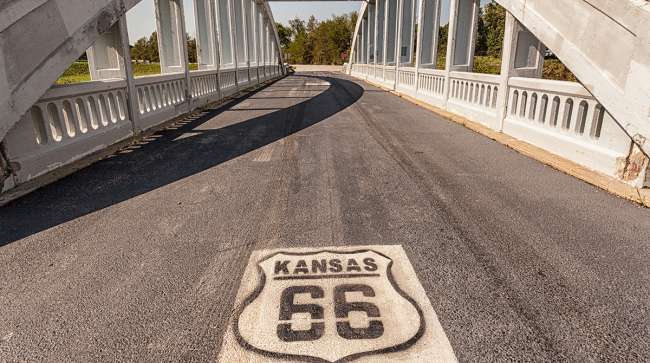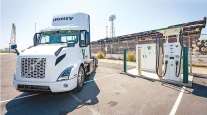Staff Reporter
ASCE Gives Kansas C on Infrastructure Report Card

Kansas’ infrastructure has improved slightly, according to the American Society of Civil Engineers’ most recent report card.
The state earned a C on the report card, a small jump from the C- it received on ASCE’s last scorecard, issued in 2013.
Nine aspects of infrastructure were considered: aviation, bridges, dams, drinking water, energy, levees, rail, roads and storm water. All of these categories received either a C or a C-.
Kansas DOT spokeswoman Laurie Arellano said the agency appreciates the report, which provides a comprehensive review of the state’s infrastructure. In particular, she said highways and bridges are critical for the movement of $600 million in freight a day. Bridges received a C, and roads received a C-. On the 2013 scorecard, bridges earned a D+ and roads received a C+.

“We appreciate the thorough and fair review of our state’s transportation infrastructure done by the professional engineers and ASCE staff,” Arellano said in a statement. “Our highways and bridges are critical to maintaining the state’s economy, and we welcome assessments that help open lines of communication with local agencies and stakeholders on ways we can work together to improve the transportation infrastructure.”
According to ASCE, Kansas ranks fifth in the nation for total number of bridges, with 5,000 state-owned, 19,500 locally owned and 400 Kansas Turnpike Authority-owned structures. The American Road and Transportation Builders Association found that 8.4% of Kansas’ 25,001 bridges are structurally deficient.
According to ASCE’s report, freight traffic is expected to increase throughout the state, heightening the need for funding roads and railroads. The report found that 13% of the state’s 140,000 miles of public roads are in poor condition.
The scorecard recommends increased infrastructure funding to address issues across all nine categories. ASCE determined that Kansas would need to invest $122 million per year to maintain its system of bridges. Some $76 million was spent on bridge replacements in fiscal 2015.
“Due to a lack of an adequate funding stream in many Kansas counties, when bridges can no longer safely carry the statutory minimum allowable load of 3 tons, they are simply closed without being repaired or rebuilt, requiring local citizens to detour around the structure,” ASCE’s report says.
In order to remedy the lack of infrastructure funding, Arellano said Kansas’ government returned the federal fund exchange back to its original exchange rate of 90 cents in state funds for every $1 in federal funds, allowing cities and counties to complete local projects they need in a more timely and less costly manner. The federal fund exchange program allows a local public agency to trade its federal obligation authority with KDOT or another local agency in exchange for state funds.

Colyer
Additionally, Gov. Jeff Colyer signed a law in May that created the Transportation Task Force, which evaluates the progress of transportation programs and makes recommendations for future funding needs.
“We look forward to working with the newly created Transportation Task Force as they seek ways to address many of the deficiencies that have evolved as a result of the delayed projects and reductions in funding in the past,” Arellano said. “We will continue to be good stewards of taxpayer funds as we keep Kansas infrastructure strong and remain a key part of planning the growth of the state’s economy.”
ASCE’s report notes that participating in public-private partnerships, as emphasized in President Donald Trump’s infrastructure funding proposal, may be an effective way to complete projects. The White House’s funding principles unveiled Feb. 12 would rely significantly on nonfederal funds to reach a $1.5 trillion top line over 10 years. Overall, $200 billion in direct federal funds would be sought to achieve the plan’s desired top line.
“Kansas must anticipate this new political climate and prepare unique projects to capture this funding, as well as prepare for fewer ‘conventional’ federal funds,” the report states.




